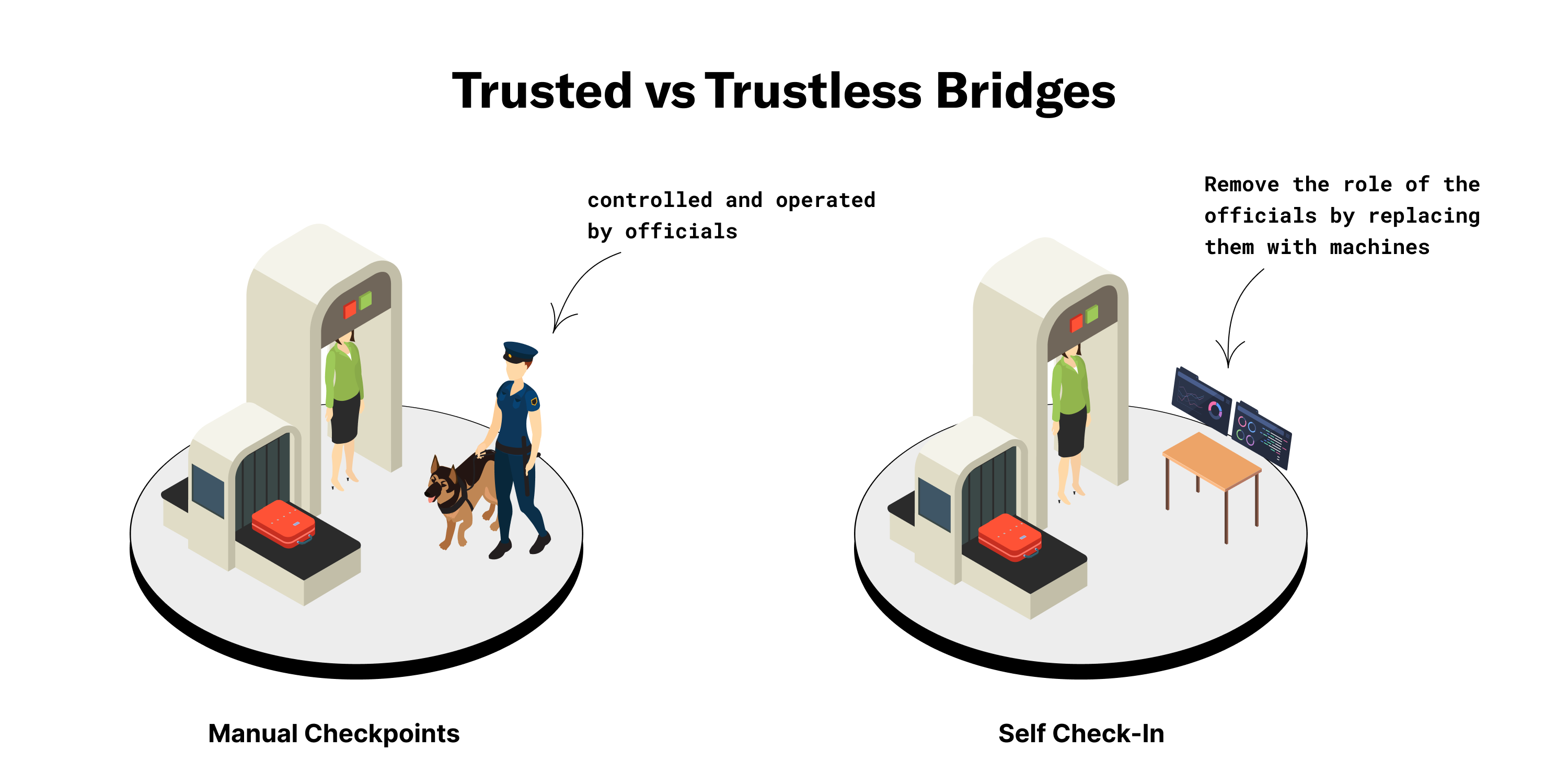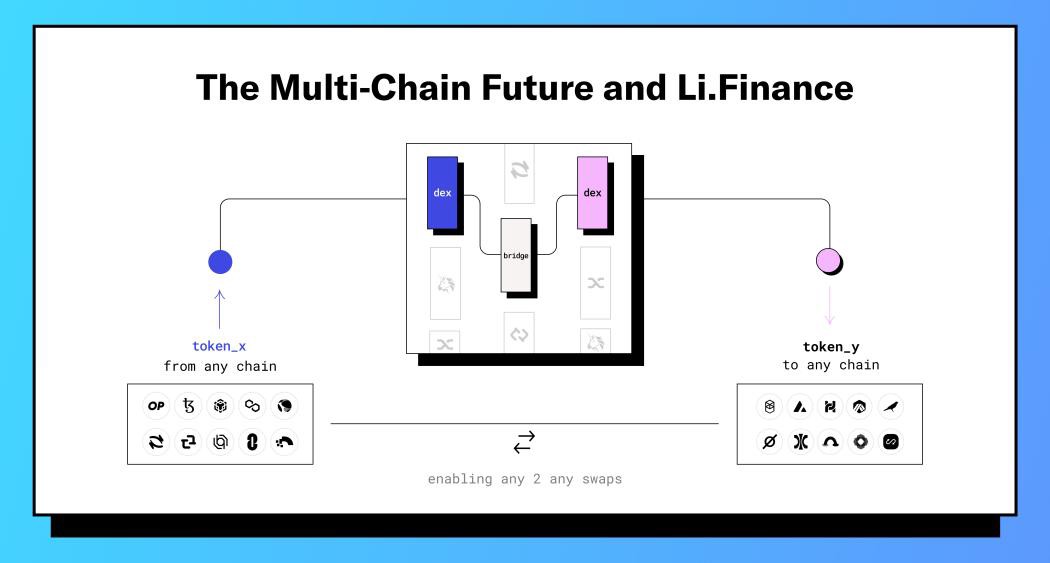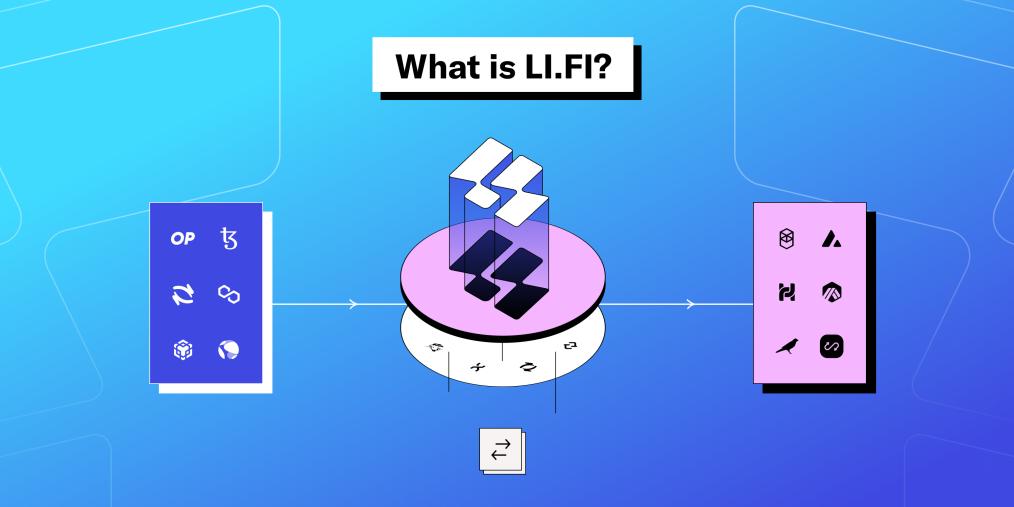
What is LI.FI?
The Ultimate Cross-Chain Bridge & DEX Aggregator
Crypto and blockchain technology have come a long way since their inception. We started small with a limited number of options — but that’s not the case anymore. We are now in a multi-chain ecosystem, with 100+ active public blockchains hosting thousands of users daily. However, this presents a new problem: the lack of interoperability between different blockchain networks.
This article discusses the challenges of lack of interoperability in the multi-chain ecosystem and how LI.FI, a cross-chain bridge and DEX aggregator, can be the solution.
Let’s dive in!
Lack of Interoperability in the Multi-Chain Ecosystem
While the crypto industry attracted many people because of the rising prices of assets, the ones who stayed for the technology took a trip down the rabbit hole, to say the least. Developers have been BUIDling, and their hard work has produced a vast multi-chain ecosystem. However, due to the presence of numerous blockchains, users have been bombarded with a plethora of options. Different blockchains offer unique applications and features that attract users with varying needs. For instance, Ethereum is more decentralized and thus more secure, whereas Solana is faster and thus allows transactions to be settled more quickly.
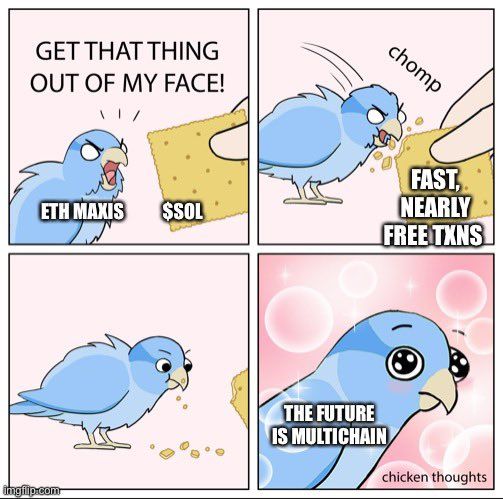
Disclaimer: No ETH Maxis were harmed
Developers have introduced blockchain bridges to fulfill the need for interoperability and unify the increasingly fragmented crypto landscape. In a nutshell, these bridges help users seamlessly transfer funds from one blockchain to another.
Unfortunately, the bridging ecosystem is a complex world. Similar to blockchains, bridges are designed differently and thus have different strengths and weaknesses. Moreover, bridges are restricted by the interoperability trilemma, and it’s likely that a single bridge cannot satisfy all of the needs and wants of all users and developers.
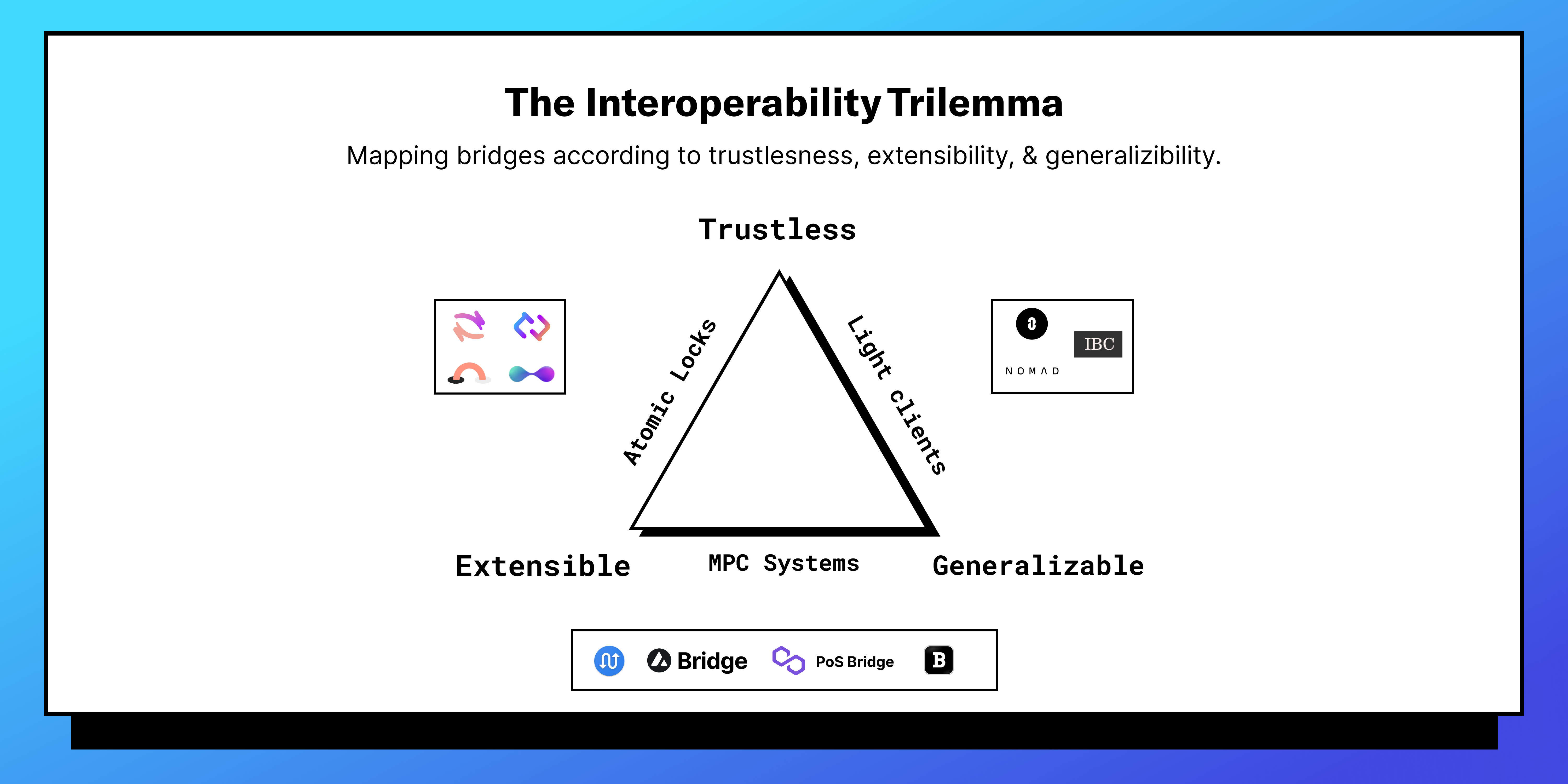
Mapping Bridges — The Interoperability Trilemma
As a result, to offer users a good experience, developers usually end up implementing more than one bridge. While doing so solves one problem, it creates many new ones as implementing multiple bridges is costly and time-consuming.
This is where LI.FI comes into the picture and offers a solution for the challenges in the multi-chain. We’re not another bridge. We’re a bridge aggregator with a goal to increase the ease of interoperability within this ever-growing ecosystem.
What is LI.FI?
At LI.FI, we aggregate the most important bridges in the ecosystem and offer a one-stop solution for the challenges of the multi-chain ecosystem. We create a middle layer between blockchains and decentralized applications by abstracting away liquidity pools on-chain and the bridges between them.

LI.FI for your dApp
We are neutral towards any blockchain, bridge, DEX, or dApp and only want what’s best for the crypto ecosystem. Thus, we offer a product suite to help developers build highly connected applications. If you’re a developer seeking interoperability, here’s why you should implement our product suite:
Bridges bring new problems — The integration of bridges is a friendly gateway that allows users to use any DApp instantly. However, bridges can be complicated to implement and have their own set of problems. With our solution, you won’t have to implement any bridge yourself, and you will have access to our product stack, which contains the most important bridges.
You may want to add DEXes — As developers, the goal is to offer the best solution to the users. As a result, when developers typically implement a bridge, they also want to add
. LI.FI connects the bridges to DEXes and DEX aggregators, allowing cross-chain any-2-any swaps.

DEX and DEX Aggregators with LI.FI
LI.FI offers a comprehensive solution. Our product suite consists of the following:
An upgradeable smart contract — This helps abstract the communication between different bridging solutions.
An intelligent routing backend — This helps determine the best route for any on-chain or off-chain cross-chain swaps.
A JavaScript Software Development Kit (SDK) — The LI.FI SDK integrates the smart contract and the routing backend.
A customizable widget — Being UX Maxis ourselves, we want to help developers provide a pleasant user experience through our customizable widget.

Configuration for drawer mode of our widget view with a floating action button
That’s not all. We have also leveraged our experience working with bridge builders to create a neat solution that makes their lives easier. To assist bridge builders, we:
Wrap their bridge
Connect it to DEXes
Provide an SDK that is labeled and hardcoded to use just their bridge
Offer a great user experience (We’re UX Maxis, after all)
Closing Thoughts
LI.FI has already attracted more than half of the active bridge builders in the DApp ecosystem. This is just the beginning — we’re only just getting started!
We’ve partnered up with the brightest minds and aim to build the best abstraction and aggregation solution available on the market. If you’re a blockchain network, bridge builder, or dApp developer, come talk to us and let’s work together!
FAQ: What is LI.FI?
Get Started With LI.FI Today
Enjoyed reading our research? To learn more about us:
- Head to our link portal at link3.to
- Read our SDK ‘quick start’ at docs.li.fi
- Subscribe to our newsletter on Substack
- Follow our Telegram Newsletter
- Follow us on X & LinkedIn
Disclaimer: This article is only meant for informational purposes. The projects mentioned in the article are our partners, but we encourage you to do your due diligence before using or buying tokens of any protocol mentioned. This is not financial advice.
